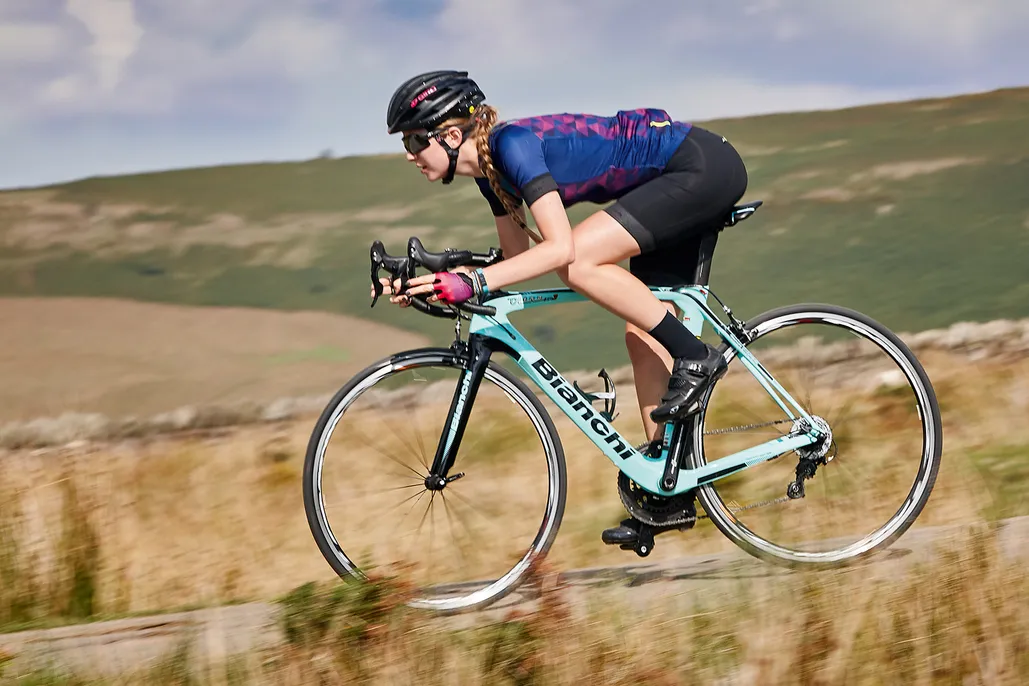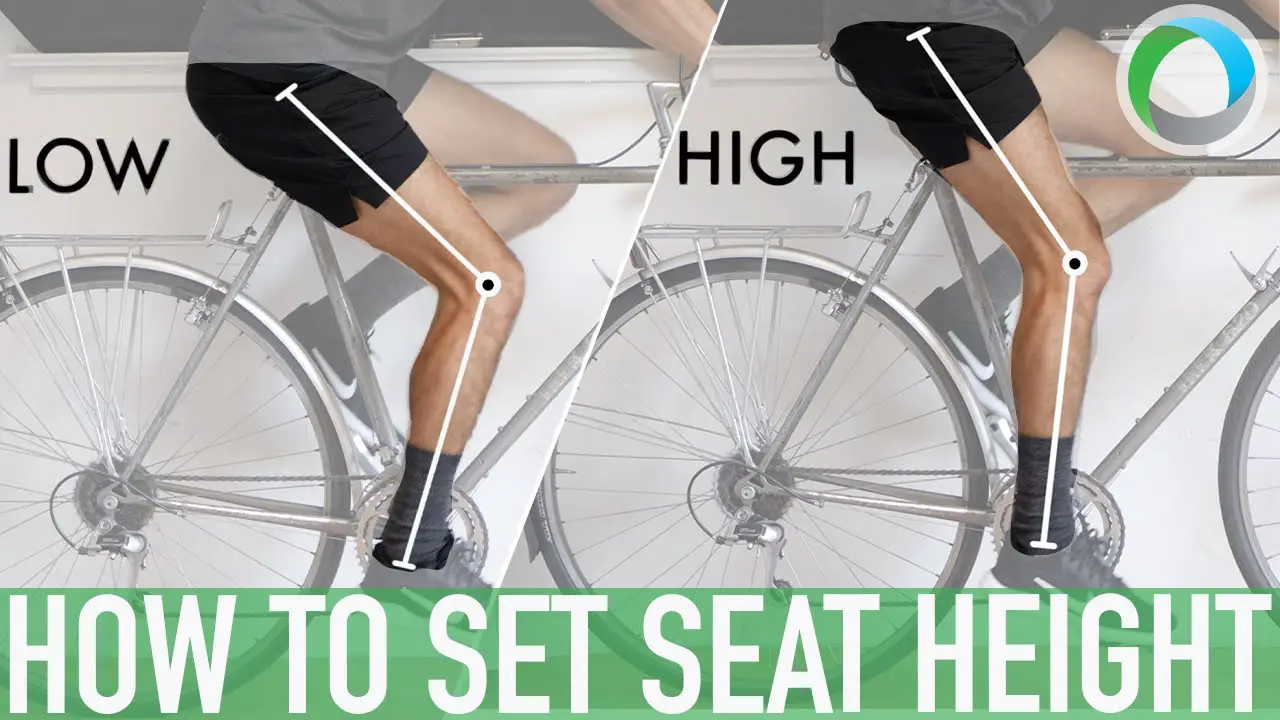The correct road bike seat position ensures comfort and maximizes pedaling efficiency. Proper alignment reduces the risk of injury.
Setting the right seat position on your road bike can significantly enhance your riding experience. A well-positioned seat promotes better power transfer, reduces fatigue, and helps prevent common cycling injuries. Riders should focus on three key aspects: saddle height, fore-aft position, and tilt.
Saddle height impacts your leg extension and overall comfort, while the fore-aft position affects your balance and pedaling efficiency. Tilt adjustments help in maintaining a comfortable posture during long rides.
Remember, individual preferences and body mechanics play a crucial role in determining the optimal seat position. Regular adjustments and professional bike fitting can ensure a perfect setup tailored to your needs.

Credit: www.bikeradar.com
The Importance Of Proper Seat Position
Proper seat position balances comfort and performance. A good seat position reduces strain on your body. It helps you ride longer without pain. Your hips, knees, and feet must align well.
Seat height is key. Too high or low can cause discomfort. Adjust the angle of the seat. A level seat avoids pressure on sensitive areas.
Long-distance riding needs a perfect seat position. A well-adjusted seat helps in maintaining energy. It prevents numbness and soreness.
Make sure to check your seat position often. A small adjustment can make a big difference. It can boost your riding experience.
Anatomy Of A Road Bike Seat
Bike saddles have many parts. The most important is the seat cover. It is made of leather or synthetic materials. The padding under the cover adds comfort. Gel or foam padding is common. The rail system attaches the saddle to the bike. Rails are often made of steel, titanium, or carbon fiber. The shell is the base of the saddle. It is usually made of plastic or carbon fiber.
Saddles come in many designs. Some are narrow and others are wide. Narrow saddles are good for racing. Wide saddles are better for long rides. Materials vary too.
Leather saddles are durable and get more comfortable with use. Synthetic saddles are lighter and water-resistant. Choose a saddle that fits your riding style.
Finding Your Ideal Saddle Height
Start by measuring your leg length. Use a tape measure for accuracy. Stand with your back against a wall. Place a book between your legs. Make sure it is snug against your crotch. Measure from the top of the book to the floor. This is your leg length.
Sit on your bike with your heel on the pedal. The pedal should be at the lowest position. Your leg should be straight. This helps set the correct saddle height. Make small adjustments if needed. Ensure your hips do not rock while pedaling. Comfort is key.

Credit: www.bikeradar.com
Seat Fore And Aft Adjustment
Adjusting the road bike seat fore and aft optimizes rider comfort and efficiency. Proper positioning enhances pedaling power and reduces strain.
Determining The Correct Saddle Setback
A proper saddle setback ensures comfort and efficiency. Saddle setback refers to the horizontal position of the seat. It affects your pedaling power and comfort. Adjusting it correctly can prevent injuries.
Measuring saddle setback can be tricky. A good starting point is to use the Knee Over Pedal Spindle (KOPS) technique.
Knee Over Pedal Spindle (kops) Technique
KOPS technique helps in finding the right position. Sit on your bike with the pedals level. Make sure the crank arms are horizontal. Drop a plumb line from the front of your knee. The line should pass through the pedal spindle.
If the line is not aligned, adjust the saddle. Move it forward or backward. Repeat the process until the alignment is perfect. This ensures better power transfer and reduces strain.
Tilting The Saddle For Optimal Alignment
The angle of the saddle affects your comfort and speed. A tilted saddle can reduce pressure on sensitive areas. This can lead to a more enjoyable ride. Too much tilt can cause pain in your back and wrists. Always check your saddle angle before a ride.
Start with the saddle level to the ground. Make small adjustments to find the most comfortable position. Use a spirit level to check the angle. Test ride your bike to see how it feels. Adjust as needed until you find the perfect angle.
The Role Of Seat Post In Bike Fit
Proper seat post adjustment ensures optimal road bike seat position. It enhances comfort, maximizes power output, and prevents injuries.
Types Of Seat Posts
There are various types of seat posts. The most common ones are the straight and offset seat posts. Straight seat posts keep the seat directly above the post. Offset seat posts push the seat back a little.
This helps riders who need more space. Aero seat posts are designed for speed. They cut through the wind better. Suspension seat posts have a spring inside. This helps absorb shocks on bumpy roads.
Adjusting Seat Post Length
Adjusting the seat post length is crucial. It affects comfort and performance. A higher seat can help you pedal more efficiently. But it can also cause strain. A lower seat can be more comfortable. But it may reduce power.
Finding the right height is important. Use a tape measure to get the right length. Mark the seat post once you find the best position.
Choosing The Right Saddle For Your Body Type
Body shape plays a big role in saddle comfort. People with wider hips may need a wider saddle. Those with narrow hips might prefer a narrower saddle. Also, sit bone width is key. Measure your sit bones to find the right fit.
A bike shop can help with this. Some saddles have more padding. Others are firm. Choose what feels best for your body.
Finding the perfect saddle can take time and patience. Try different saddles to see what works best. Start with a test ride. Ride for at least 30 minutes. Pay attention to any discomfort. Adjust the saddle position if needed.
A small change can make a big difference. Some people use gel seat covers. These can add extra comfort. Remember, it’s normal to try a few saddles before finding the right one.
Common Mistakes In Seat Positioning
Choosing the wrong saddle width is a common mistake. A saddle that’s too narrow can cause discomfort. A wide saddle might lead to chafing. It’s important to measure your sit bone width. This ensures the saddle fits you properly.
Pain and numbness are signs your seat position is wrong. Adjusting the saddle height can help. The angle of the saddle also matters. Small tweaks can make a big difference. Always listen to your body.
Advanced Tips For Competitive Cyclists
Small changes can make a big difference. Adjust the seat height by millimeters. Check your knee position over the pedal. Make sure your hips are stable while cycling. Keep your back straight and relaxed.
Adjust the seat angle slightly. Test different positions during training. Find what feels most comfortable. Track your performance with each change. Compare results over time. Consistency is key to finding the best position.
Sometimes, expert help is needed. Consult a professional if pain persists. They can provide personalized advice. A bike fitter uses advanced tools. They measure your body and bike. They find the perfect setup for you.
This can improve your performance. It can also prevent injuries. Regular check-ups are important. Make sure your position stays optimal. A small investment can lead to big gains.
Maintaining Your Seat Position
Regular check-ups are important for your road bike seat position. Always ensure the seat is at the right height. This helps to prevent discomfort and injuries. Adjust the seat angle to match your riding style.
Small adjustments can make a big difference. A comfortable seat position improves performance. Check for wear and tear on the seat and post. Replace them if needed. Keeping the seat clean is also crucial. Dirt can affect its position. Regular maintenance keeps your bike in top shape.
Essential tools for at-home maintenance include a bike multi-tool. This helps with minor adjustments. A torque wrench is also useful. It ensures bolts are tightened correctly. A level helps to check the seat angle.
A measuring tape is needed for height adjustments. Lubricant for the seat post keeps it moving smoothly. A clean cloth is handy for wiping down the seat. Having these tools makes maintenance easy and quick.

Credit: m.youtube.com
Frequently Asked Questions
What Is The Proper Saddle Position On A Road Bike?
The proper saddle position ensures comfort and efficiency. Adjust the saddle height so your leg is slightly bent at the bottom of the pedal stroke. Align the saddle horizontally and adjust fore-aft position to balance weight distribution.
What Should My Position Be On A Road Bike?
Maintain a slight bend in your elbows. Position your hands comfortably on the handlebars. Keep your back flat and aligned. Ensure a relaxed neck and shoulders. Adjust saddle height for optimal leg extension.
How Should You Sit On A Road Bike?
Sit on a road bike with a slight bend in your elbows. Keep your back flat and relaxed. Position your hands on the handlebars comfortably. Align your knees with your pedals. Adjust the saddle height for optimal leg extension.
What Is The Correct Position For Bike Seat Post?
The correct bike seat post position aligns with your hip bone when standing next to the bike. Ensure slight knee bend when pedaling. Adjust for comfort and efficiency.
How Do I Adjust My Road Bike Seat?
Adjust your seat height so your leg is slightly bent at the bottom of the pedal stroke.
Conclusion
Achieving the right road bike seat position enhances comfort and performance. Adjust your saddle height and angle for optimal results.
Regularly check and fine-tune your setup to avoid discomfort and injuries. A well-fitted seat position will make your rides more enjoyable and efficient.
Happy cycling!

Steven is a professional cyclist and his passion is cycling. He has been cycling for the last 6 years and he loves using bikes while outing as well. Based on his experiences with the different types of bikes; he is sharing his opinions about various bikes so that a beginner can start right away. Find him on Twitter @thecyclistguy Happy Biking.


Leave a Reply